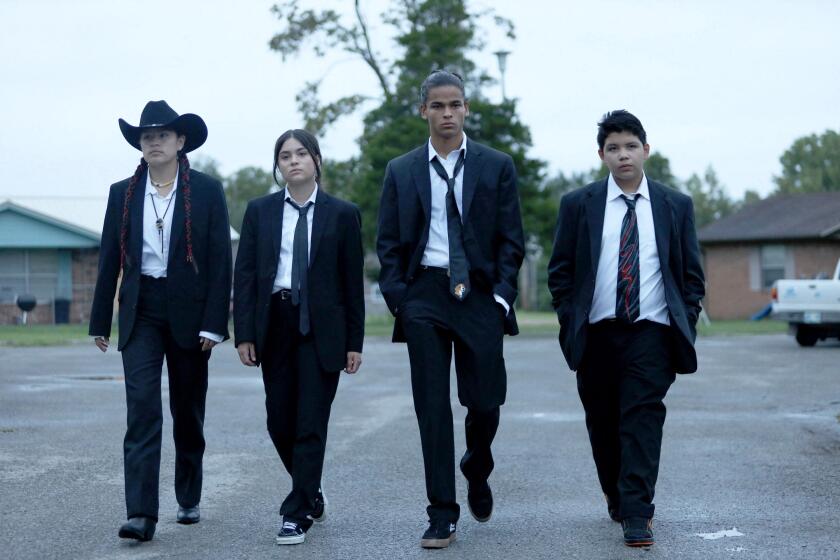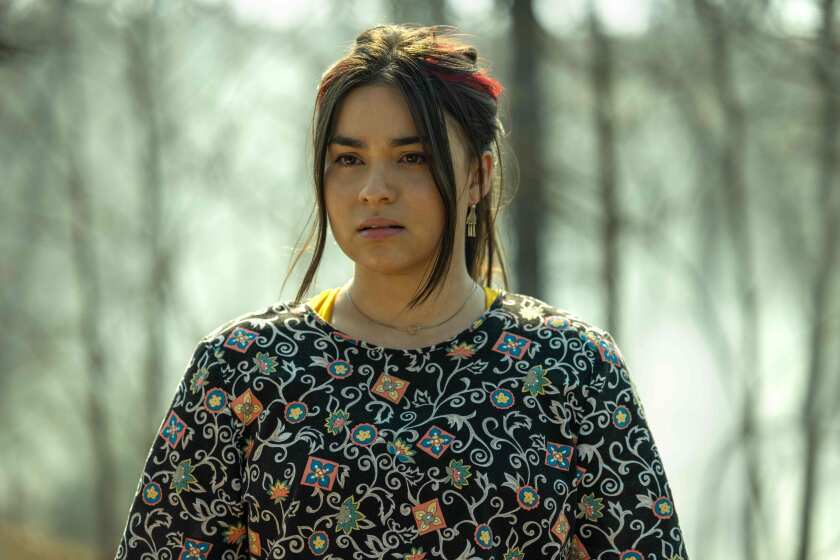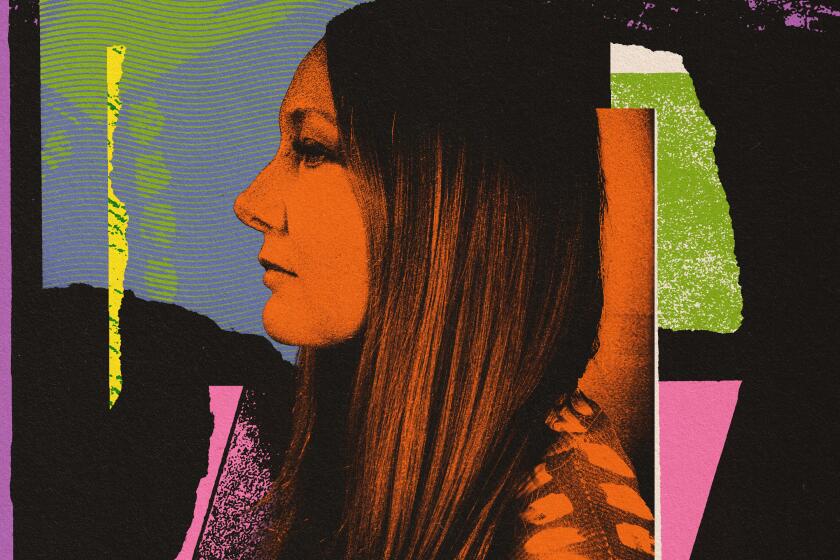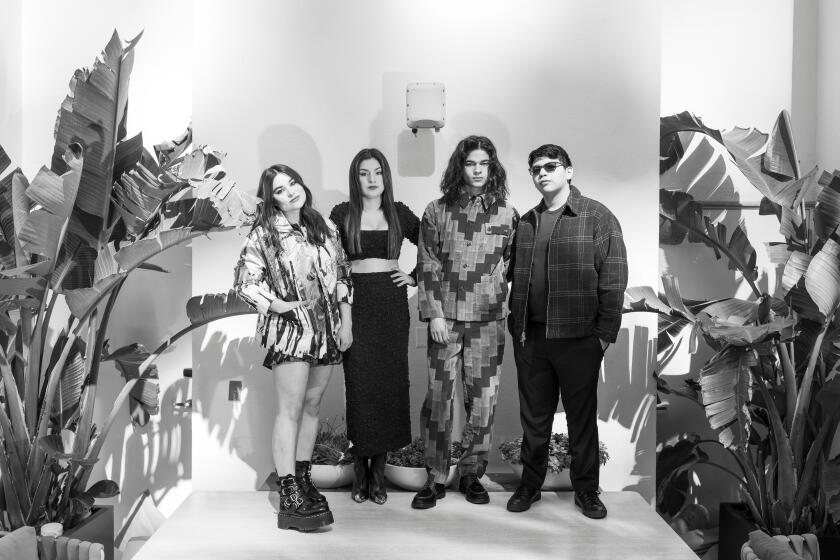For two directors, ‘Reservation Dogs’ has been an incredible experience: ‘There’s so much humanity’
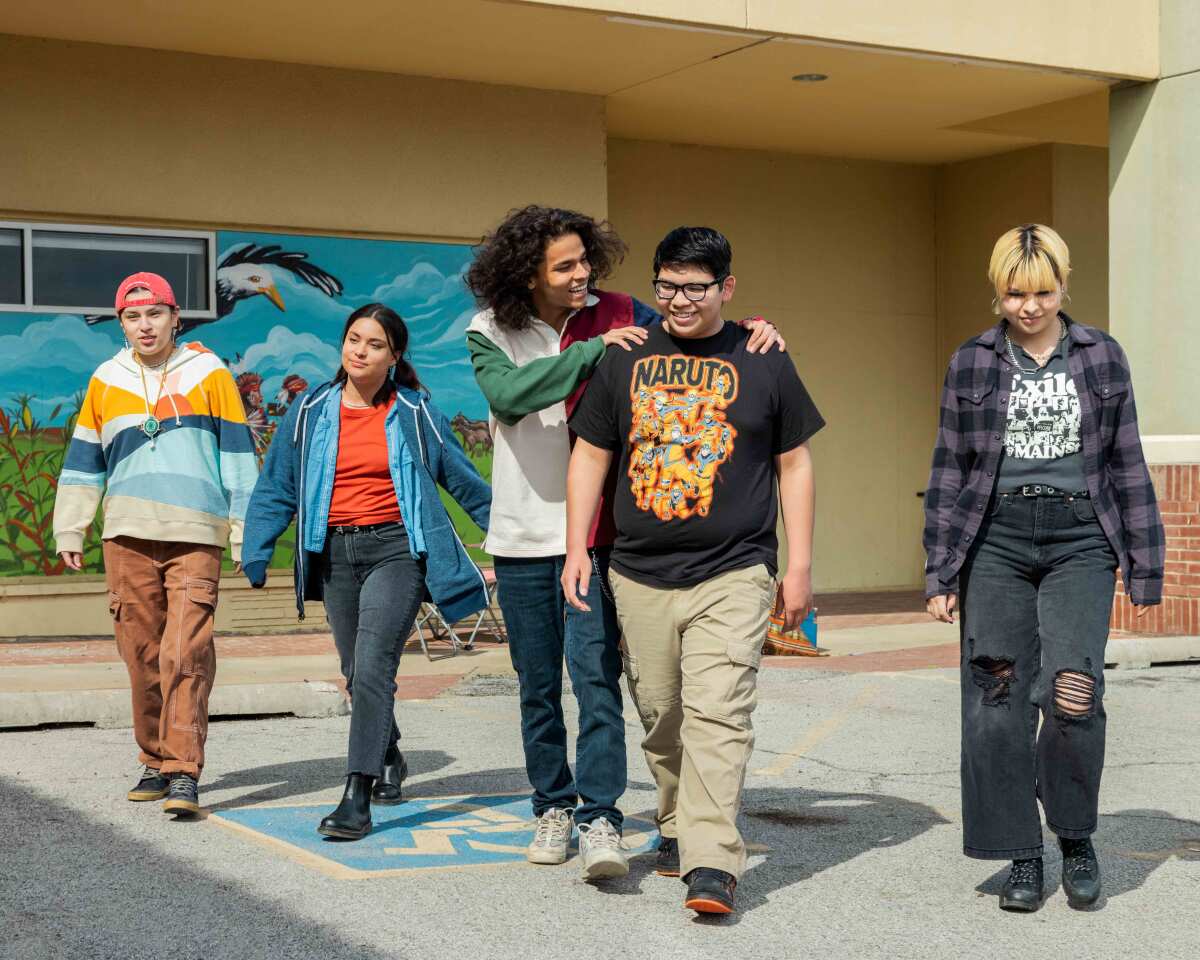
This story includes spoilers for “Reservation Dogs” Season 3, including Episode 6.
The third and final season of “Reservation Dogs” has been taking some bold swings.
After a second season that saw Bear (D’Pharaoh Woon-A-Tai), Elora Danan (Devery Jacobs), Willie Jack (Paulina Alexis) and Cheese (Lane Factor) set off on a cathartic cross-country road trip in honor of their late friend, the coming-of-age series, created by Sterlin Harjo and Taika Waititi, has taken some time to explore the backstories of established characters outside of its core teen protagonists.
As the Rez Dogs continue to grapple with figuring out who they want to be, early episodes in Season 3 like “Deer Lady” and “House Made of Bongs” have revealed how a certain vigilante spirit and some of the community’s elders became who they are.
Directors Danis Goulet and Blackhorse Lowe, who combined have directed four of the first six episodes of Season 3, have relished both the creative freedom and collaborative creative community they have experienced while working on “Reservation Dogs.”
The new comedy, set on an Oklahoma reservation, uses its rich, highly specific sense of place to offer a refreshing take on contemporary teen life.
“I heard a lot of horror stories about what it’s like to work on the television side, especially if you’ve come up in independent film,” said Goulet, a Cree-Métis filmmaker who previously directed the Season 2 episode “Mabel.” “But coming onto ‘Reservation Dogs’ was the opposite of that experience. It was like being embraced by this incredibly supportive community in Oklahoma of everyone that is so passionate about telling these stories.”
“The great thing about shooting in Oklahoma, it’s just so community-based, and the heart and soul of the story is all there,” added Lowe, a Navajo filmmaker who has worked on the show since its first season. “I think out of all my television experiences, this is the one I’m most spoiled on because Sterlin gives us the most creative control to get the job done. Having his support, along with everyone in FX, it’s a very good place to be.”
On a recent video call, Goulet and Lowe discussed their individual episodes, their experiences on the show and how “Reservation Dogs” has changed how TV can be made. This conversation has been edited for length and clarity.
Danis, you directed that first episode that got the kids back to Oklahoma. What was it like to get that script? What was exciting for you about that story?
Goulet: Episode 301 really felt to me like a road movie. Coming off Season 2, where it kind of feels like there’s a natural closure of something — there was a goal, they were trying to get to California, and the kids finally do — then the natural question that bubbles up is “What’s next?” It’s a really nice, fresh place to start. What’s great about the bus as a space to work in is that there’s an intimacy to it. Like, the kids have been out in the dangerous world, so we bring them into a sort of safer space where we could just sit with them as they catch up with themselves and reflect on what’s just happened and also tee up certain things for the season. And the actors that we’ve come to all know and love over the past few seasons, the first day that I shot with everyone, I was just like, “Man, these guys have it dialed in.” It’s amazing, because so many of them were fairly fresh to acting, with the exception of Devery. But to see them just have really found their stride as actors, it’s such an amazing process to come together and work with them again.
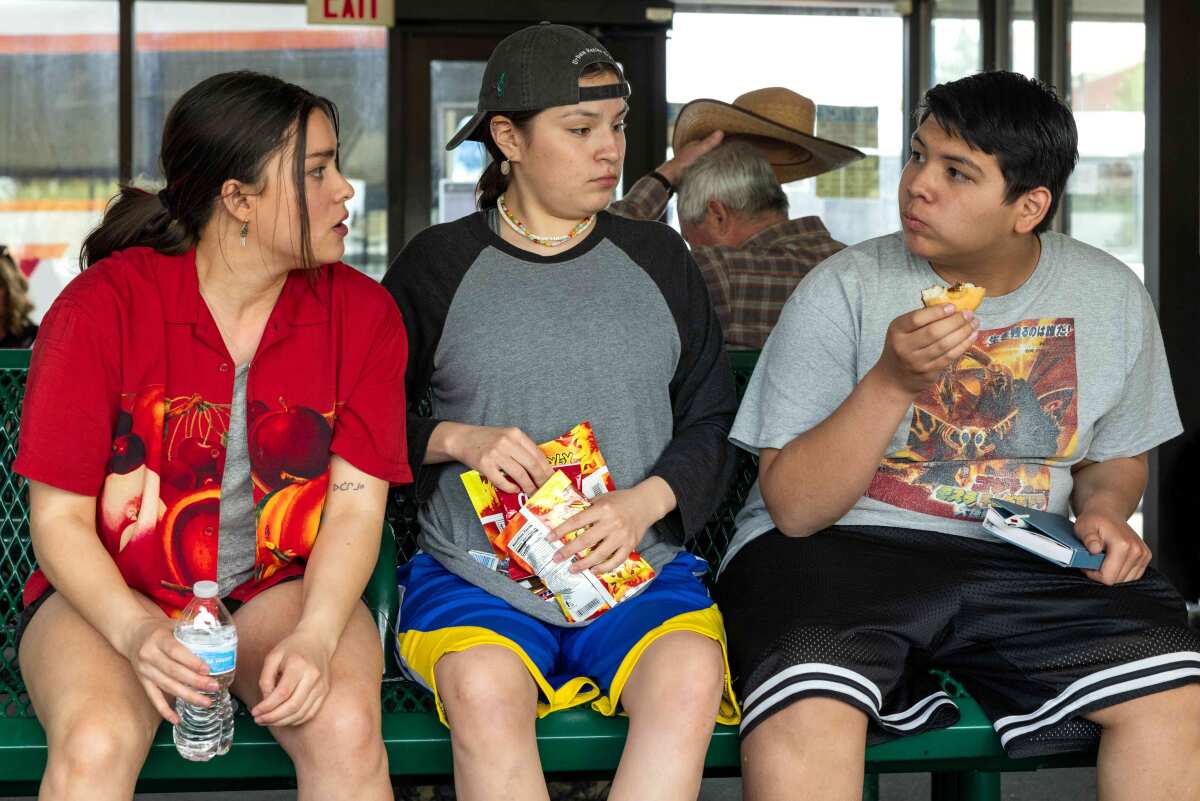
Blackhorse, you’ve been with the show since Season 1. What was working on that first season like before anybody even knew a show like “Reservation Dogs” was possible?
Lowe: When Sterlin was shooting the pilot, he told me if it gets picked up, I would come on, and Danis, as well and other directors, to do the rest of the show. It was a very pleasant feeling to come onto an actual set where people knew what we were doing, and everyone was extremely enthusiastic to be there. I think in that first season, we were kind of just finding our footing with the characters, the visual grammar of everything and what Sterlin wanted. The writing was so solid, everything was there. It was just a matter of plugging in the characters and tuning into the right wavelength and just making everything happen. Everything there within my first couple of episodes, with Uncle Brownie (Gary Farmer) and the other one with Deer Lady (Kaniehtiio Horn), those things went across very beautifully. We had no problems. So that first season, it was blessed.
The common understanding is that TV is a writer’s medium. As filmmakers, how do you navigate being true to yourselves as artists but also fit it into the showrunner’s vision?
Lowe: Sterlin really catered everyone’s story to what their strengths are. Like, Danis, I don’t know that you deal with a lot of stuff with funerals of people, but the sensitivity and care and the emotions that you got out of everyone and how powerful that episode [“Mabel”] was. Danis was just tailor-made to bring out those emotions. And Sterlin’s like, “Well, with stoner and horror stuff, that’s perfect for Blackhorse.” He would always throw me the genre stuff, or something that was a bit more off-center. He knows everyone’s strengths and what they can do best.
Goulet: It’s amazing because we’ve all known each other since the early to mid-2000s. We’ve all watched so much of each other’s work. It really feels like you’re kind of returning to this family and then just being totally empowered creatively. Sterlin really trusts what people are going to do. I think the beautiful thing about the show is that it isn’t afraid to take risks and to go off into different places. I think that really speaks to Sterlin’s leadership. I also think he is a great matchmaker, because he really thinks about what scripts are going to go to what director. And then, once that choice is made, he’s like, “Here you go, it’s yours. What can I do to help?” It’s really an incredible experience. I haven’t worked in a lot of other TV, but from the stories I’ve heard from other directors, this is a real exception and not the rule.
As the acclaimed FX comedy begins its second season, EP Sterlin Harjo and stars Devery Jacobs and D’Pharaoh Woon-A-Tai reflect on a ‘cathartic’ journey.
Blackhorse mentioned Deer Lady earlier, but Danis, what did you think when you to got the script exploring her backstory in Episode 3? The history and legacy of Indian boarding schools is something not all American audiences are aware of. How did you want to approach it?
Goulet: God, I read the script and it’s so brilliant. It was written by Sterlin, and he’s done this incredible job of talking about this huge, historical, collective experience that Indigenous people all share, which is how we’ve all been impacted by what the U.S. calls the [Indian] boarding school system. In Canada, we call it the residential school system. All of us Indigenous folks know this history. It’s very familiar.
Up in Canada, we’ve had what’s called the Truth and Reconciliation process, where there was a commission set up to look at the impact [of residential schools] on Indigenous families. The findings were released in 2015, and it’s really immense. Things like a child going into a residential school had a greater chance of dying because of the deplorable conditions than a Canadian soldier did going into World War II. This system existed all over the U.S. as well and it’s so, so important that we contend with this history. So when I read the script, I was like, “Oh, s—.” And then when I got down to Oklahoma, I was like, “Oh, sure, give Danis the unfunny episode.” But what was so brilliant about what Sterlin did was go there in the history, but use the Deer Lady character as a way in. She’s already so loved, but there’s also elements of the fantastic — she’s fantastical. And to have those elements just give us a bit of space to put it in a genre container. I think it’s a really important and protective [way of bringing the audience in] when we tell these stories.
When I read it, immediately, I felt — and this is something that I’ve already thought about as a filmmaker — but this is a horror show. What was really experienced in real life is a horror show. And when I talked to the boarding school consultant that was on the episode, Denise [Lajimodiere], about how far do we push it and how much should we show and how do you know when it’s too much — all those questions that come up when you’re going to depict something like this — she said, “Whatever you put onscreen won’t be as bad as what it really was.” I think there’s something about holding the truth of it honestly, but also, when you put it in this fantastical story and make it about the origin story of a character that we already know and love and who’s portrayed so incredibly brilliantly by Kaniehtiio Horn, it just becomes this Trojan horse way of getting into this larger issue that is a huge collective trauma.
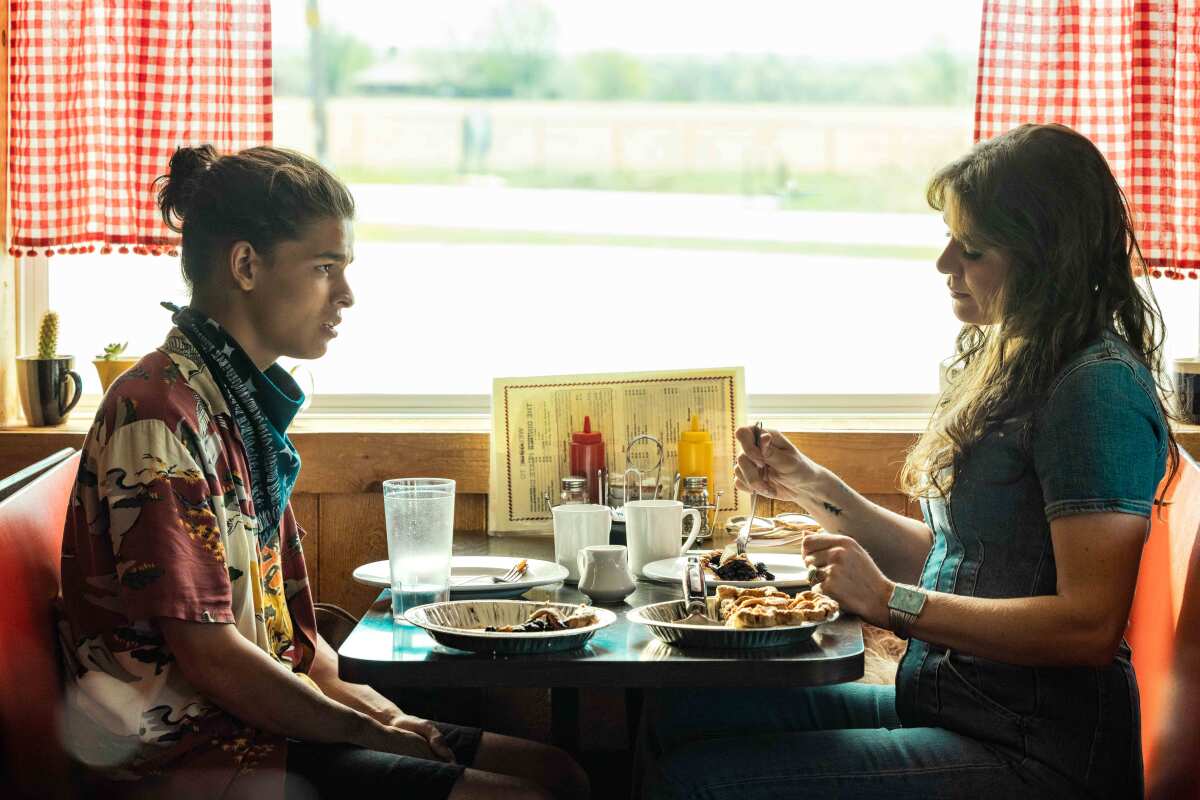
We’ve seen more and more people realize that horror is an effective genre for engaging with real, structural horrors.
Goulet: I think “Get Out” really is the thing that cracked the lid off it. There were genre filmmakers from all kinds of communities that were interested in this, and I want to acknowledge the late Jeff Barnaby, who was an Indigenous filmmaker up here in Canada who really started from the get-go around the early 2000s making staunch genre films right out of the gate before people even accepted that genre and Indigenous stories could go together in the same sentence. It feels like it should have been so obvious, but I feel like “Get Out” really just changed everything in terms of what was possible and now, of course, we’ve seen all kinds of examples of the way that genre can be used. But I love it as a way of telling stories like this; I think it’s really an incredible medium to get into it all.
Blackhorse, the beginning of Episode 6 with Cheese really got my hopes up that we were getting a zombie episode.
Lowe: I wish. A zombie episode? No. It’s four men talking in the woods.
The filmmaker has capitalized on several opportunities created by Sundance, first after short ‘Little Chief’ and now after feature ‘Fancy Dance.’
You’ve worked on what I think of as “uncle episodes,” where the focus is on some of the elders like Uncle Brownie. What was it like for you to get to explore their backstories in Episode 5?
Lowe: It was great, especially when I saw that it was like a full on ‘70s episode and inspired by “Dazed and Confused” and all those other films. I just immediately took to the material. And being able to explore all the established characters, who are elders in the present time, and actually see them in high school during their different boarding school experience in the ‘70s where, you know, it was a bit more free and open with not as much oppression — a lot more LSD and sex. It was cool to see that Native experience going from what Danis’ episode had shown, to the ‘70s. It’s still kids ripped away from their parents, but in terms of experience, it’s completely different.
The nice thing about the show is it provides all of these different interpretations of the Native experience. And to have all of that there and also be able to see where all of the trauma and all of this love grew from with these four characters [Brownie, Bucky, Irene and Mabel], it was just cool to explore and set up their characters for who they were and who they’re going to become.
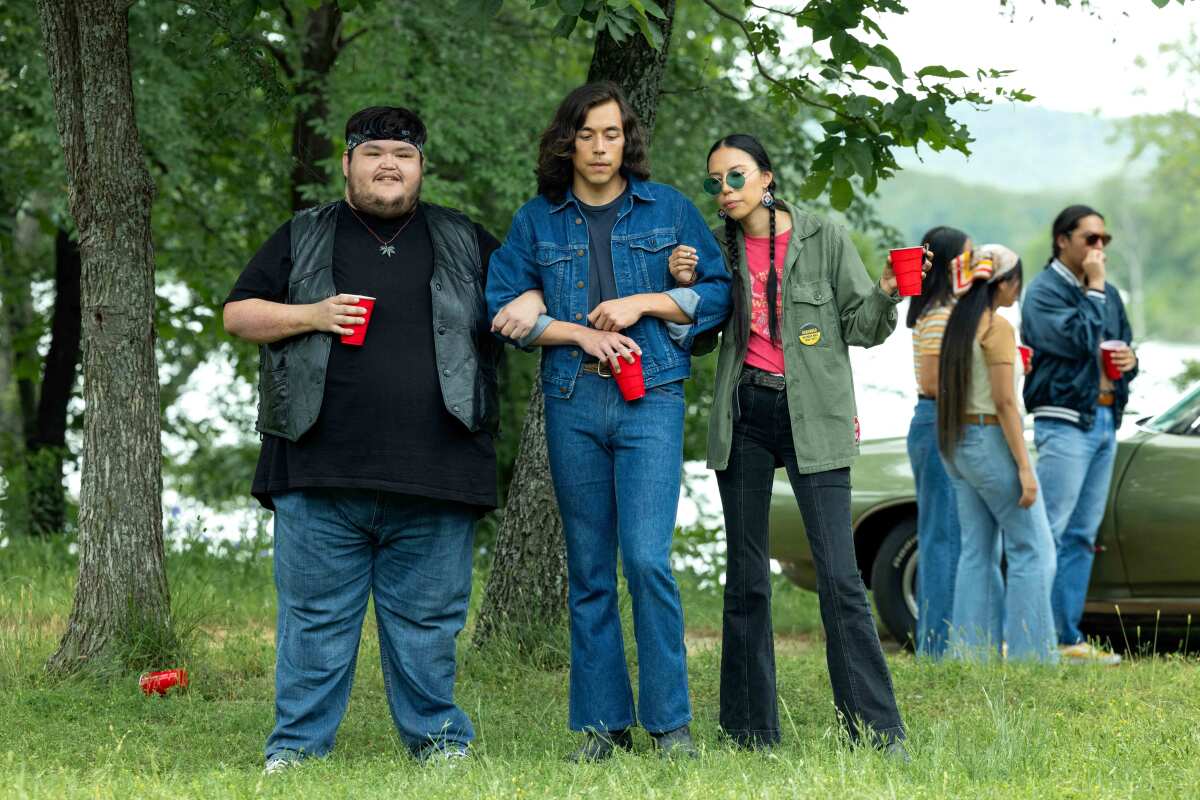
It was fun to see the elders being their own version of the Rez Dogs.
Lowe: They were young s— a— doing drugs in the woods. That parallel is there. The human factor is one lovely thing that Sterlin always shows. All people are human and all people are f— up and full of love. And showing Maximus, the character played by Graham Greene [in Episode 2], how he came to this place in the story where he’s sent to [psych wards] and getting all this electro-shock therapy. What was the beginning of that? Where and how did that story start? It was really fun to explore that character and that budding darkness.
What are the moments that you take away from on set? What was memorable for you about your time working on these episodes this season?
Lowe: Tick checks. That’s what I remember.
Goulet: Blackhorse has touched on it but there’s so much humanity in the show. I think because of the politics of representation, there’s this pressure to portray Indigenous people in a certain way. To be able to just be flawed humans, with all of the complexity of all of our relationships onscreen is so amazing, and I think the show just really centers on love at the core of it.
Obviously, for Episode 3, it got heavy at times because you can’t touch on something that big without having to go to a place of just quiet and really honoring what happened and also trying to hold the space that the actors are trying to work in when they’re trying to portray really difficult things. And I feel like that episode in particular, everyone mobilized. From Sterlin out there talking to background performers’ parents in order to make sure all the kids were doing OK and that they were OK, to what elder Wotko [Long] shared about his own family’s experience in boarding school before we shot in the mess hall.
There was a young man, Adam, who had intended to cut his long hair. Hair has a lot of meaning in a lot of our cultures and that was the first thing that got cut off when kids arrived at boarding school. He, with the support of his family, made the decision to cut his hair onscreen. That scene, when we went to shoot it, you could hear a pin drop in the room, it was so quiet. It was like everybody knew what it meant, and it was super emotional. I think I, among many others that participated in that, are still processing what a big thing that was.
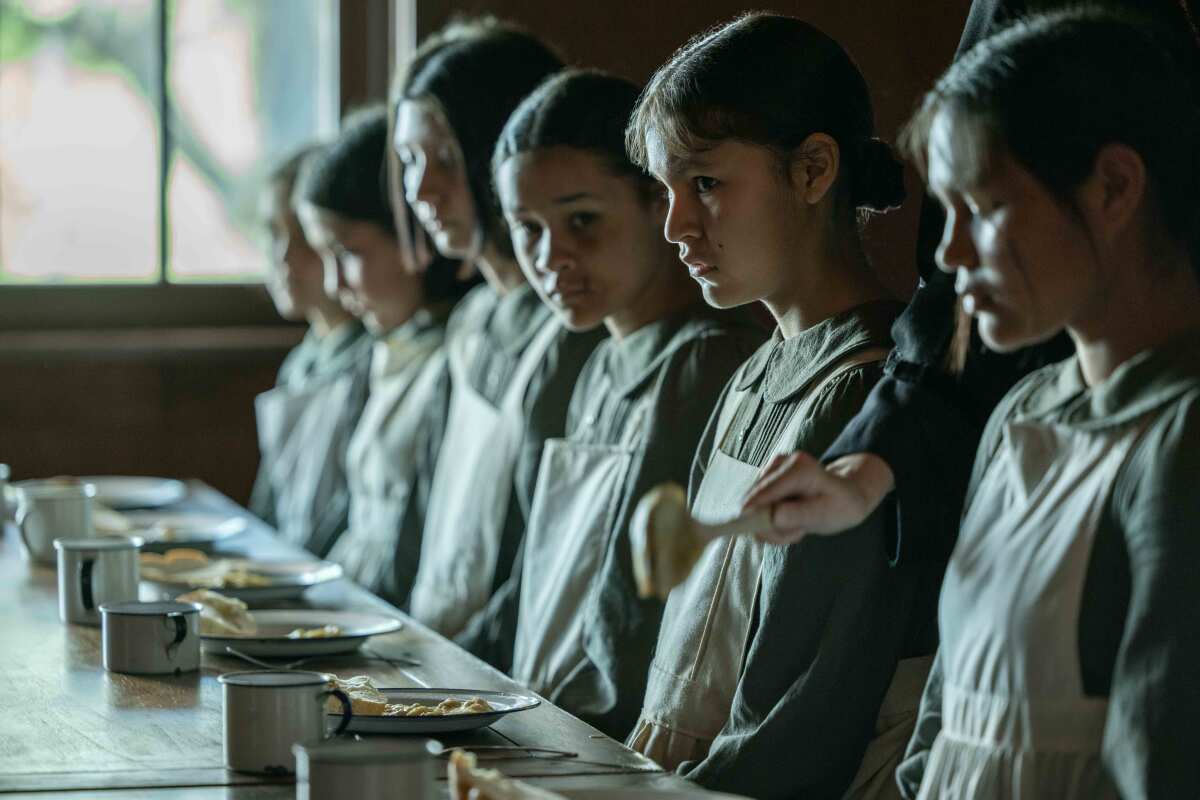
Blackhorse, your episodes tend to involve fun buddy stuff on the surface, but as we see in Episode 6, there is another layer to it. What are the things that have stuck with you while working on your episodes this season?
Lowe: I think just returning to this crew that I love all based in Oklahoma, and all the Indigenous people from all different states coming together and putting their heart and soul into this show. Just really putting so much care and effort into all of it, looking forward to every episode and all these different creative challenges. They’re all really close friends and collaborators I’ve gone on to work with on other films.
In terms of the episodes, there’s always particular things that I really get a kick out of, either working with the actors or finding some new technique to apply to whatever story it is I’m telling. Like, I mostly get the psychedelic episodes, but because of that I also get the emotional breaks. Like Big having his emotional moment figuring out where his trauma came from with his grandmother [and] with Deer Lady [in Episode 208], then ending up in some sort of weird action movie sequence at the end with fishhead f—. Now [in Episode 306], these elderly men are opening up to Cheese and trying to get him to come back to community but it completely flips to where he makes them reveal their demons and they end up having this huge breakdown.
It’s just nice to see characters switch, I don’t want to say positions of power, but positions of emotional tenderness with each other. These men are trying to educate Cheese about the importance of family and community and letting go of certain things, and it flips to all these men just completely bawling in the woods. It’s beautiful to see adults, to a certain degree, put in their place by the younger generation. And it’s very much a Native thing of laughter and crying and horror, you just keep smiling and keep living this nightmare of life to make it a good thing.
We can’t talk about “Reservation Dogs” without discussing what the show has done for Native representation not just onscreen but also, as you’ve both mentioned, behind the camera. What do you want to take from your experience on this show as you pursue your own next projects?
Lowe: Residual checks, if the negotiations get done.
Goulet: It’s funny that you say that, Blackhorse, because those of us who have been around for more than a minute know what it’s like to slog the way in independent film. To watch Sterlin for so many years just make a bunch of features that all get into Sundance, but then it’s [still] so hard to finance that next thing and you never do get a bigger budget. To finally get that opportunity to see what’s possible when resources are given to Native-led storytelling is so incredible. You, as well, have worked in independent film for so long. It’s like, yeah man, you do deserve a residual paycheck. We have paid some dues. And not just the regular dues that folks all over the place have paid. At the same time that we were trying to make our films in those early days, we’re also trying to convince funders and anyone in the industry that would listen that our stories matter. That they have value. That we deserve to be the ones telling them. That if you trust us with our stories, we will totally blow it out of the water.
That’s what the show has done. It’s beyond proven that it can be done. All of the critical acclaim that the show has gotten is so well deserved, but it’s also kind of like, we’ve been saying this for years. We’ve all known that the talent was there. We just needed the opportunity. I really hope that in the post-strike era, this just continues [and] we don’t have to keep beating down the door at the same time that we’re just trying to make our own work. It’s been a long road.
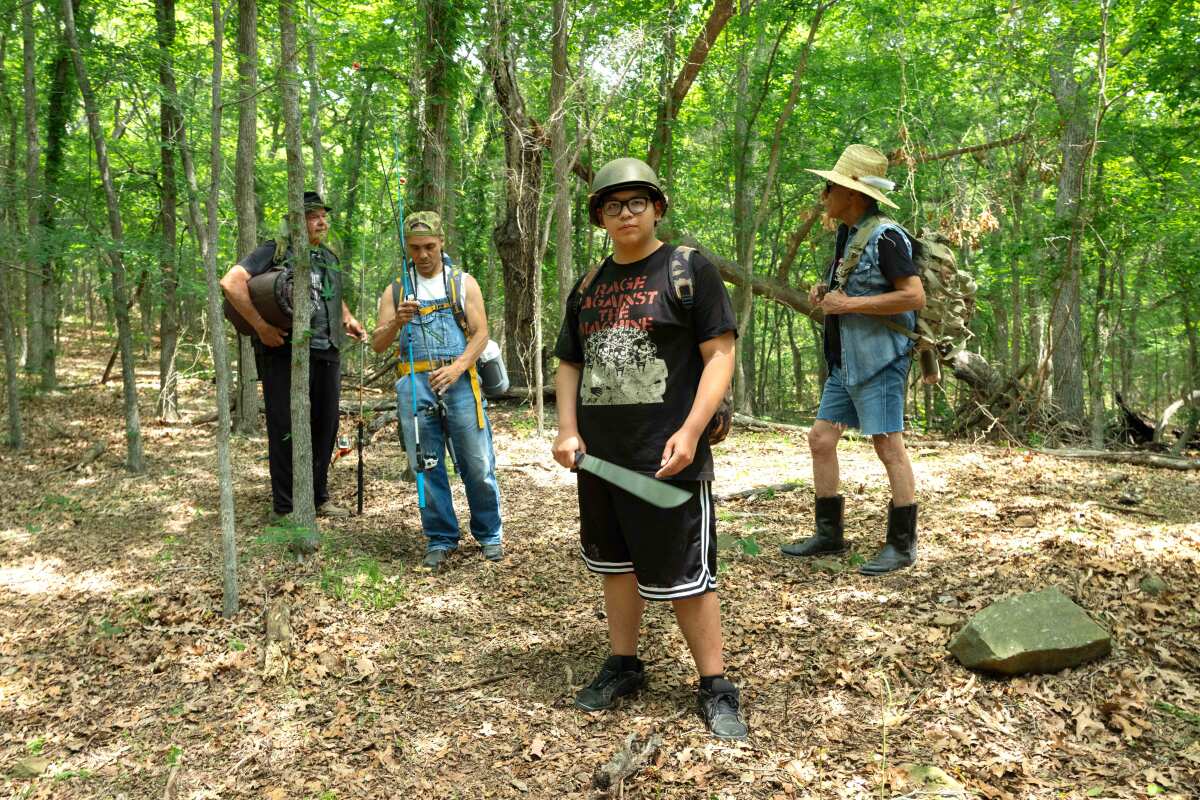
Lowe: The big thing is the relationships with the crew. Working with Tazbah [Rose Chavez] and working with Migizi [Pensoneau]. Working with the people at FX and the amazing cast and crew. There’s so many friendships and moments that we’ve shared on set from lightning strikes to all these different places we’d go to shoot and other adventures.
It really is a family environment, and it’s just nice to have this complete flip of other TV shows that are very corporate. You get your three performances, you get your stuff, you make your time, you get out to the next location [and] you keep on doing. Whereas with this, you meet the elders there. You get to know the land. You get to know the community. You figure out the prayers. You figure out the songs, [and] there’s a welcoming. There’s a very Native way of approaching these things, because these stories are living and breathing. They have lives of their own, so you really have to be very conscious and very careful with it.
Just as Hollywood is discovering the young Indigenous stars, they’re finding it’s possible for a TV production to embrace both industry and community.
Everything from Deer Lady to boarding schools to just the very mundane things of daily life, all these things are very spiritual and have a lot of heft to them. We really have to be very conscious of these things and the people that we’re leading them through and the stories we’re leading them through and how we take care of them. I’m very grateful that Sterlin, the community, they’re able to provide spiritual support for that.
That’s the one big thing I’ll really take away from this, is seeing my culture and the thing I love to do in life completely meshed together in a beautiful way.
Goulet: That’s amazing. See, you pretend to be just about the stoner comedies, Blackhorse, but we all know better. And it’s so true what you’re saying. The show isn’t just changing what ends up onscreen, it changes the way things are done.
To go down to Oklahoma and be a part of that cast and crew, in that family and that closeness that values our traditions and our ways of being, all the things that Blackhorse is talking about, it’s a really big deal. I think moving forward, when we look to the future, this is what Indigenous filmmakers have been talking about for years. We’re seeing an industry grind to a halt because people are rightly saying the way we’re doing things is not right. We need to change it, we need to adjust it, we need to do this in a different way. I feel like what Sterlin and what everybody involved in the show is doing is really charting a new way forward about how we all make stuff together. Because it doesn’t have to be exploitative and extractive and awful, where you feel like you need to take a shower and cash your paycheck. We’re storytellers, and to be a part of something that does it in that way is just incredible.
More to Read
The complete guide to home viewing
Get Screen Gab for everything about the TV shows and streaming movies everyone’s talking about.
You may occasionally receive promotional content from the Los Angeles Times.
